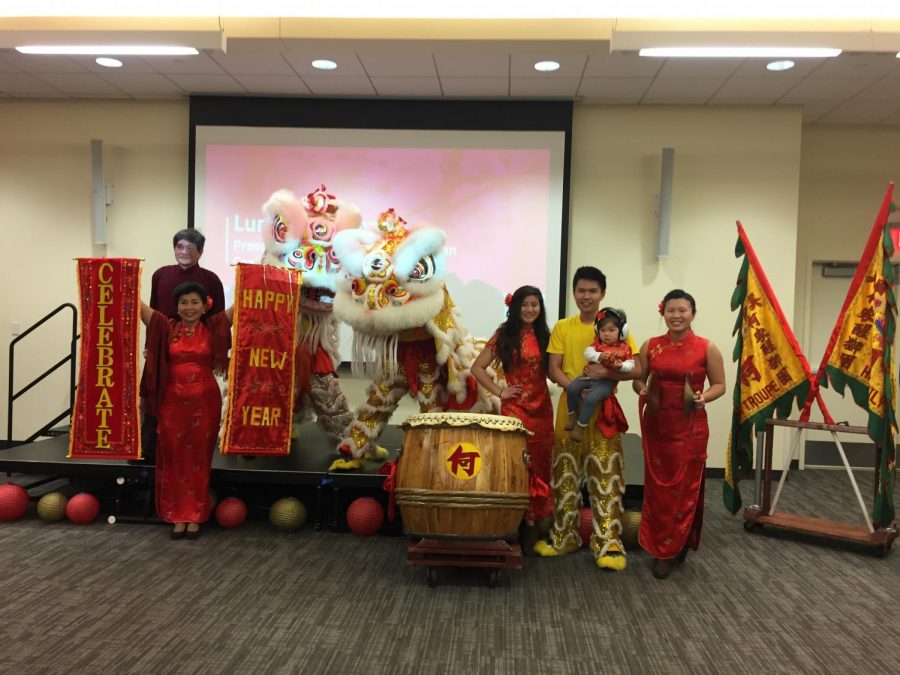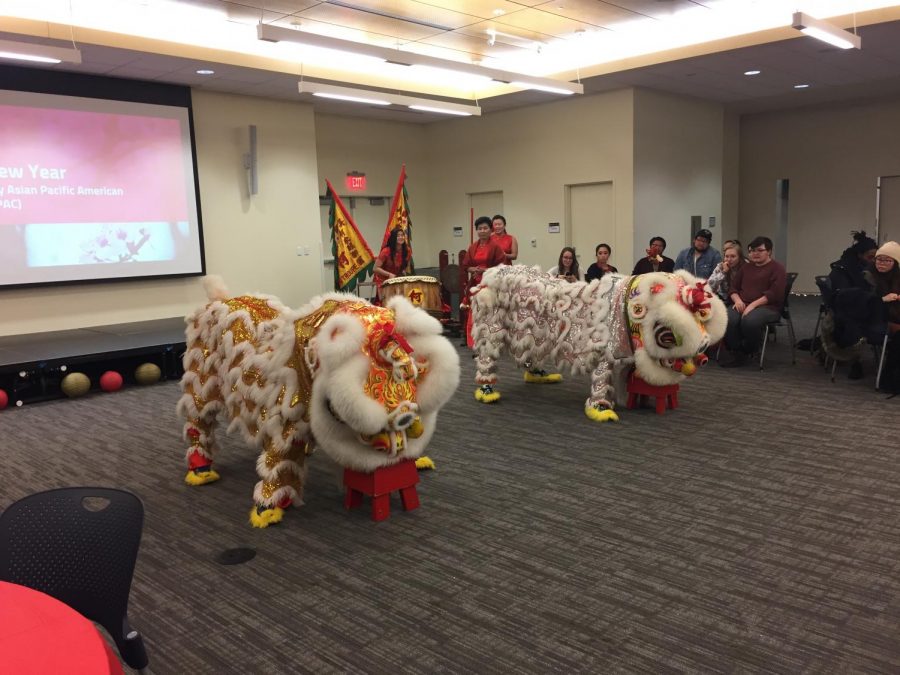Ringing in the Lunar New Year
Hamline’s Asian Pacific American Coalition kicks off the Year of the Dog with a bang.
More stories from Kelly Holm
Members of the Ha Family Lion Dance Troupe pose after performing a traditional Chinese lion dance.
On Thursday, Feb. 22, Hamline’s Asian Pacific American Coalition (APAC) hosted their annual Lunar New Year celebration in the Kay Fredericks Ballroom. Lunar New Year, celebrated in numerous East Asian cultures, begins with the first new moon of the lunar calendar, which is based on the moon’s orbit around the earth rather than the earth’s orbit around the sun, and ends on the first full moon of the lunar calendar. The animal associated with each year varies on a 12-year cycle, and this year is the Year of the Dog.
APAC’s theme for this year’s celebration is “Paving a Path Toward Unity,” chosen in hopes of fostering greater intercultural communication and collaboration.
“We’ve acknowledged the lack of assistance and guidance we have from one another on campus and in the world today… that is preventing us from uniting,” the student organization wrote in a statement explaining the philosophy behind their theme. “APAC has decided to take the initiative to bridge this gap in order to work harmoniously into the future.”
Several APAC members and attendees shared what Lunar New Year means to them.
“For me, Lunar New Year means a fresh start, but it also means time for family and friends,” said senior Tenzin Kunkyi, the secretary of APAC. “During Lunar New Year, we usually go to other people’s houses to visit them, give them gifts… Family gatherings are the main thing I think of.”
Kunkyi went on to describe childhood memories of Lunar New Years.
“When I was younger, I would always get Lunar New Year’s money, like the adults would give kids money, but since I’m older now I don’t really get much… But I always looked forward to that part,” she said with a smile.
Lunar New Year is also known as Spring Festival, and has agrarian roots. Historically it was known as a time when farmers could put aside their field work before the new growing season began in order to celebrate with family and friends.
“I don’t necessarily celebrate it as much as other Asians might, ‘cause my parents are white, but Lunar New Year is… a time for new beginnings,” said sophomore Cassia Egan-Lawless. “My favorite parts are family, and friends and food.”
There certainly was a multitude of food to go around at the celebration, as well as games and activities. One game was Ddakji, a traditional South Korean pastime featuring origami tiles. One must throw their own tile at their opponent’s on the floor, in an attempt to flip it over.
Another station featured Kau Chim: divination sticks or fortunes. The fortunes were kept in a glass jar, and in order to determine your fortune, you must shake the jar until a lone stick breaks away from the rest and falls out. Many fortunes featured motivational statements such as “Stop dreaming, start doing” and “Failure is the mother of all success.”
After a dinner reception and activity time, the highlight of the celebration was found in a traditional Chinese lion dance performed by the Ha Family Lion Dance Troupe. Some troupe members donned lion costumes and danced to bring good luck in the coming year. Others beat on gongs as the lions shimmied their way through the crowd and interacted with attendees, much to the audience’s delight.
Sophomore Padee Vue, the vice president of APAC, wished attendees good tidings in the Year of the Dog.
“I’d like to give them my blessings, and good luck with whatever they may do in the future, and to overcome any barriers that they may face,” Vue said.


